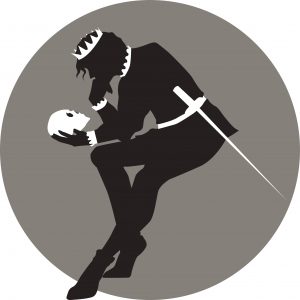Teachers and examiners sometimes find themselves wondering whether a text should be considered literary or non-literary. The answer is often elusive, and agreement is difficult to arrive at. This blog post explores some guidelines that could be considered when deciding on the nature of a text.

By Guillermo Duff
“What is literature and does it matter?” Jonathan Culler ponders this question in Literary Theory: A Very Short Introduction. He is not alone in his wonderings. The question of what makes a text literature is often considered at the beginning of language and literature courses – with varying degrees of success in engaging students in the inquiry and in finding satisfactory answers. It has also been extensively discussed by theorists, who have not found it any easier to produce conclusive guidance on what constitutes a literary text.
Whether it matters or not to determine if a text is literary or non-literary is a different question, and an interesting one to consider not only within the study of IB Diploma Programme (DP) language A subjects but also because of our permanent efforts to establish connections with theory of knowledge, one of the core components of the IB DP.
In the language A courses (first assessment 2021), being able to tell between literary and non-literary texts matters more than ever. The 2021 language A: language and literature course, for example, requires that literary and non-literary texts be explored together in the individual oral, and students need to make sure that they are choosing one of each. Students will also be able to choose which of the texts studied they will be using for each assessment component. When choosing texts for paper 2, which involves the comparison and contrast of two literary works, it is important for language A: language and literature students to be clear about the differences between literary and non-literary texts, so that they choose only among the former.
So what guidelines have theorists provided in order to tell a literary text from a non-literary one? And what are the implications of these guidelines for the decisions students and teachers must make, particularly in the language A: language and literature course?

Gérard Genette provides a crucial starting point when he states that “literature is the art of language. A work is literary only if it uses the linguistic medium exclusively or essentially” (2). This parameter will certainly be useful to students since it draws a very clear line in relation to multimodal texts. Multimodal texts, relying as they do on a multiplicity of mediums to create meaning, will not be considered literary in the new syllabuses. The theory of knowledge voice in us is quick to remind us that saying that all multimodal texts are non-literary texts does not mean to say that all non-literary texts are multimodal. But Genette’s statement leaves films, music videos, TV series and many other multimodal texts out of the realm of literature. The 2021 language A courses take this one step further: texts like TV or film scripts, which are inextricably linked to the corresponding multimodal texts and which give rise to them, are also considered non-literary.
There are two caveats to the consideration of all multimodal texts as non-literary. There are two text types which despite their association with multimodality (bimodality would probably be more accurate in these two cases) will be considered literary:
- Song lyrics will be considered a sub-category within the poetic literary form. Song lyrics must therefore be considered literary texts for the 2021 syllabuses, and can be used, if a collection of lyrics by one same author is judged to have merit and is studied as a work, as a literary work for paper 2, for the individual oral or the HL essay.
- Graphic novels will also be considered literary, belonging to either prose: fiction or prose: non-fiction depending on the text being considered.
What about essays, letters, biographies and speeches? When should they be considered prose: non-fiction and when should they be considered non-literary? The IB, in the 2021 DP language A courses, has made an effort to pursue further the objective that 2013 syllabus had already set, that of putting the study of non-literary and literary texts on a par. We would prefer therefore not to overemphasise the claim that literary texts foreground form in a way that non-literary texts do not, on the understanding that both literary and non-literary texts of merit require the use of sophisticated interpretative strategies. After all, as Culler says, “both literary and non-literary works can be studied together and in similar ways” (18).
What theorists seem to agree on is that the decision in relation to a text’s literariness is dependent on the judgement of a reader or a group of readers. The curriculum review team together with the chief examiners of over 50 languages have put together a list of authors which we ask language A teachers to consider literary. Essays, letters, speeches and biographies written by these authors should be therefore taken as literary. So should similar texts written by authors not included on the list but generally considered to be writers of literature.
For other cases where questions about literariness might arise, we trust the professional judgement of IB DP language A teachers. We do ask them though to carefully consider the requirements of the assessment components mentioned earlier and to try to guarantee, as far as possible, that decisions made by students about which texts to use will allow them to show the best of their abilities.
Culler, Jonathan. Literary Theory. A Very Short Introduction. Oxford, OUP, 1997.
Genette, Gérard. Fiction & Diction. Translated by Catherine Porter. Ithaca, Cornell University Press, 1993.
